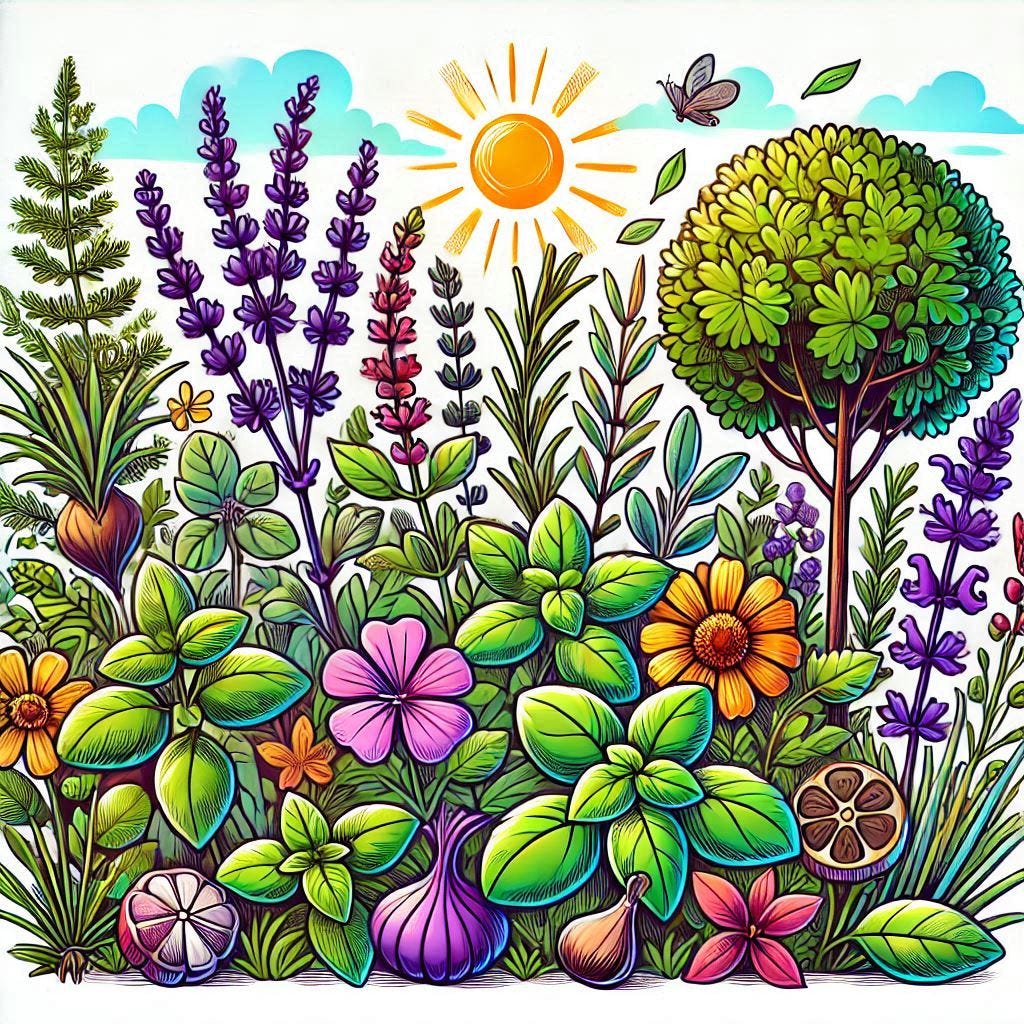Herbs vs. Shrubs: What’s the Difference?
A simple guide to understanding these two plant types!
Herbs vs. Shrubs: All You Need to Know
Plants are categorized into herbs and shrubs based on their size, stem structure, and lifespan. Here are detailed distinctions to help understand them better:
1. Size and Growth:
Herbs:
Herbs are the smallest type of plants. They grow close to the ground and generally do not exceed a height of 1 meter. They are soft and delicate.
Examples: Basil, coriander, mint.Shrubs:
Shrubs are medium-sized plants, usually growing between 1 to 3 meters. They often have multiple woody stems and a bushy appearance.
Examples: Rose, jasmine, hibiscus.
2. Stem Characteristics:
Herbs:
The stem of herbs is soft, green, and flexible. They do not have woody stems and are usually easy to bend or break. This makes them well-suited for short-term life cycles.Shrubs:
Shrubs have hard, woody stems, though not as thick as trees. Their branches usually start near the base, creating a dense and bushy structure.
3. Lifespan:
Herbs:
Most herbs are seasonal plants, meaning they live for one or two growing seasons before they wither and die.Shrubs:
Shrubs have a much longer lifespan, often surviving for many years. They are perennials, meaning they bloom and grow back year after year.
4. Branching and Structure:
Herbs:
Herbs may have few branches or none at all. They are lightweight and easy to uproot.Shrubs:
Shrubs are known for their multiple branching stems, which often emerge close to the ground. This creates a dense appearance, providing them stability and structure.
5. Uses:
Herbs:
Herbs are commonly used for their medicinal, aromatic, or culinary properties. For example:Basil: Enhances flavor in cooking.
Coriander: Used in garnishes and seasoning.
Shrubs:
Shrubs are often ornamental and grown in gardens for their beauty. Some also have medicinal or commercial uses. For example:Rose: Used for decorative purposes and in perfumes.
Cotton plant: An important source of textile fiber.
6. Examples in Nature:
Herbs: Wheat, rice, spinach, mint, parsley.
Shrubs: Bougainvillea, cotton, croton, lemon plant.


